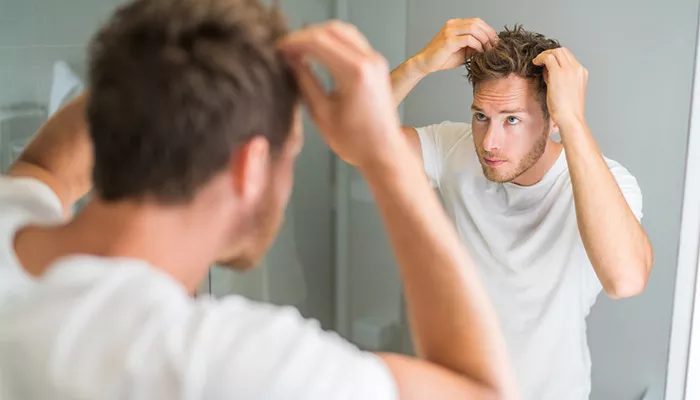Hair loss is a common concern for many people, and countless myths surround potential remedies. One such belief is that shaving can stop hair loss or even promote thicker hair regrowth. But is there any truth to this idea, or is it just another misconception? To understand whether shaving affects hair loss, we need to examine the science behind hair growth, the causes of hair thinning, and how shaving actually impacts the hair follicles.
The Science of Hair Growth
Hair grows from follicles located in the scalp, and each follicle goes through a cycle of growth, rest, and shedding. This cycle consists of three main phases:
- Anagen (Growth Phase): This is the active phase where hair grows continuously, lasting anywhere from two to seven years.
- Catagen (Transition Phase): A short phase lasting a few weeks where hair growth slows, and the follicle shrinks.
- Telogen (Resting Phase): The hair stops growing and eventually falls out, making way for new hair to begin the cycle again.
On average, people lose about 50 to 100 hairs per day as part of this natural cycle. However, when hair loss exceeds this amount or when regrowth is insufficient, thinning or baldness becomes noticeable.
Common Causes of Hair Loss
Before addressing whether shaving affects hair loss, it’s essential to understand why hair loss occurs in the first place. Some of the most common causes include:
- Genetics (Androgenetic Alopecia): The most prevalent cause, often referred to as male or female pattern baldness, is hereditary and linked to hormones.
- Hormonal Changes: Pregnancy, menopause, thyroid disorders, and other hormonal fluctuations can lead to temporary or permanent hair loss.
- Medical Conditions: Scalp infections, autoimmune diseases (like alopecia areata), and chronic illnesses can contribute to hair thinning.
- Nutritional Deficiencies: Lack of essential vitamins (like iron, vitamin D, and biotin) can weaken hair and slow growth.
- Stress and Trauma: Physical or emotional stress can trigger temporary hair shedding (telogen effluvium).
- Hairstyling Habits: Excessive heat, tight hairstyles, and chemical treatments can damage hair follicles over time.
Given these causes, it’s clear that hair loss is influenced by internal and external factors—most of which are unrelated to whether or not you shave your head.
The Myth: Shaving Makes Hair Grow Back Thicker
One of the biggest misconceptions is that shaving leads to thicker, denser hair regrowth. This belief likely stems from the observation that stubble feels coarser than longer hair. However, the texture change is purely an illusion caused by the blunt tip of shaved hair, not an actual increase in thickness.
Hair thickness, growth rate, and density are determined by genetics and follicle health, not by cutting or shaving the hair shaft. The part of the hair that we see (the shaft) is dead keratin, so removing it has no biological effect on the living follicle beneath the skin.
Does Shaving Prevent Hair Loss?
Since shaving only removes hair at the surface level, it does nothing to address the underlying causes of hair loss. Shaving your head will not:
- Stop Genetic Hair Loss: If you have androgenetic alopecia, shaving won’t slow down follicle miniaturization.
- Boost Follicle Health: Shaving doesn’t improve blood circulation to the scalp or provide nutrients needed for hair growth.
- Reduce Shedding: Since hair loss occurs at the follicle level, cutting the hair won’t prevent strands from falling out.
That said, shaving can create the appearance of fuller hair in some cases. For example, if someone has thinning hair with patchy areas, a completely shaved head may look more uniform. However, this is purely cosmetic and doesn’t change the actual hair growth process.
Potential Benefits of Shaving for Hair Loss
While shaving doesn’t stop hair loss, some people find it beneficial for other reasons:
- Easier Maintenance: Managing thinning hair can be frustrating, and shaving eliminates the need for styling.
- Psychological Relief: Some men and women feel more confident with a shaved head rather than trying to conceal hair loss.
- Cleaner Scalp: Without hair, it’s easier to apply topical treatments (like minoxidil) directly to the scalp.
Still, these benefits are about convenience and confidence—not about reversing or preventing hair loss.
Alternative Treatments for Hair Loss
If shaving doesn’t stop hair loss, what actually works? Here are some scientifically supported treatments:
Medications
- Minoxidil (Rogaine): A topical treatment that can slow hair loss and stimulate regrowth in some individuals.
- Finasteride (Propecia): An oral medication that blocks DHT (a hormone linked to male pattern baldness).
Procedures
- Hair Transplant Surgery: Follicles from denser areas are relocated to thinning or bald spots.
- Low-Level Laser Therapy (LLLT): Devices like laser combs may help stimulate hair growth in some cases.
Lifestyle Changes
- Balanced Diet: Ensuring adequate protein, iron, and vitamins supports healthy hair.
- Stress Management: Reducing stress can prevent excessive shedding.
- Gentle Hair Care: Avoiding harsh chemicals and heat can minimize damage.
Conclusion
In conclusion, shaving has no effect on hair loss because it doesn’t alter the follicle’s function or address the root causes of thinning hair. While it can be a practical or stylistic choice for those dealing with hair loss, it is not a treatment.
If you’re concerned about hair loss, the best approach is to consult a dermatologist or trichologist who can diagnose the cause and recommend appropriate treatments. Whether you choose to shave your head or explore medical options, understanding the science behind hair growth will help you make informed decisions about managing hair loss.
Related Topics:
Why Does My Hair Fall Out After Washing?
Why Am I Losing So Much Hair Lately?
Why Did I Lose My Hair So Young?


